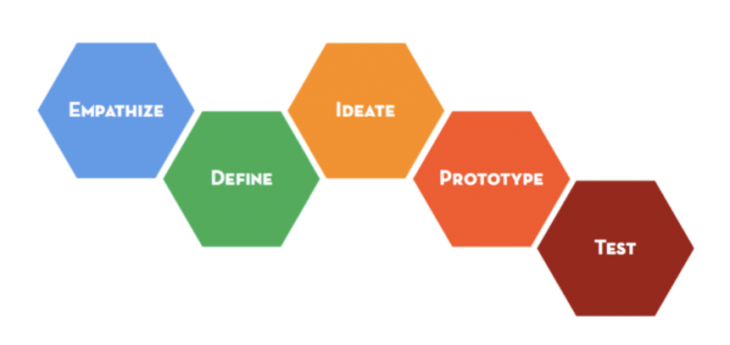Design Thinking is hot. Whether it’s sending executives to Stanford’s D school or hiring consultancies like IDEO, organizations are tapping into design thinking as a way to jumpstart organic growth and solve complex problems in their organizations. However, many of the organizations that need design thinking the most are the least able to invest in executive education programs or hire consultants.
To truly democratize the tools of design, we must not only make design thinking more accessible, but also make it easy for organizations to get achieve early results.
So how can YOU achieve results with Design Thinking? Here are 5 tips to get started.
Borrow Eyes and Ears.
Leverage your network and resources by getting as many eyes on your product, service or problem as possible. What are your employees seeing? What do your customers or potential customers think? To really get at latent feelings and gaps, don’t ask about what people think; ask how they feel. Employee ethnographic techniques to go deeper than you usually dig. Twenty deep interviews and conversations are better than two hundred shallow ones that tell you what you already know. Share this data within your organization. It’s the organic matter that fuels innovation.
Collect Observations and Insights.
Create a culture of observational awareness and questioning by encouraging or even requiring employees to talk to customers and other stakeholders and explore their experience. Encourage them to write down your insights and observations. These observations can seem short and even trivial, but when aggregated paint an important portrait of your business and the opportunities and threats that go along with it. Give everyone access to the observations and insights and let them work through them together. This just adds to your “data base.” Don’t underestimate the power of pattern recognition here.
Create Creative Space.
Once you have begun to develop a culture of observation and inquiry, create the creative space for employees to collaborate and innovate. Your job is to help create the jump off point. Analogies and metaphors can be helpful. Boil the challenges down to their most human and essential elements. Identify the root cause(s) and look outside your industry for expertise and experience to spark the imagination. Ask “what if?” and push your creative imaginations.
Encourage Experimentation and Testing.
Create opportunities for team members to collaborate around them via overnight hackathons, several hour mini hacks or opportunities for informal collaboration. One of my favorite expressions is “fail fast and fail cheap.” Shorten the feedback cycle. Push low fidelity prototyping, early testing and other mechanisms for generating quick feedback. Test assumptions, iterate and refine ideas early. Invest in the most promising and empower your teams to take leadership roles early in this process.
Always be in Beta.
Constantly review the process and don’t be afraid to iterate and improve it along the way. This should be a dynamic process. Celebrating successes and don’t punish failures. Finally, and probably most importantly, solicit feedback and crowd-source pieces of the process along the way. Business is a team sport and you’re only as strong as your team. Investing in them and asking them to invest in the enterprise is paramount. It’s a virtuous cycle.
For more tips and examples of how companies and organizations around the world are using these and other tools of design thinking to solve complex problems and innovate, check out “Solving Problems with Design Thinking: 10 Stories of What Works.” These stories provide examples of how companies and organizations are using the tools of design thinking, embedding them throughout their organizations and achieving results in the process.
Kevin Bennett, co-author of Solving Problems with Design Thinking: Ten Stories of What Works, is a manager for marketing and partnership development at Personal, a technology start-up in Washington, D.C. For more information please visit http://cup.columbia.edu and http://amzn.com/0231163568
Image Credit: dschool.stanford.edu





